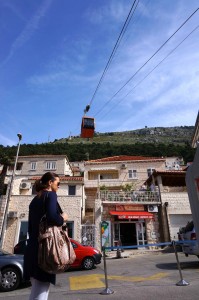- Getting ready to hit the road!
- Some thoughts on Hong Kong…
- A day in Danang and Hue, Vietnam
- Saigon River and Saigon, Vietnam
- Siem Reap and Temples, Cambodia
- The Floating Village — Kompong Phluk, Cambodia
- Phnom Penh and the road to Sihanoukville, Cambodia
- Bangkok, Thailand
- Day 2 in Bangkok — Ayutthaya, Thailand
- Singapore
- Langkawi Island, Malaysia
- Phuket, Thailand — or sort of…
- New Delhi, India
- Agra and the Taj Mahal
- The road to — and Jaipur, India
- India — a few closing thoughts.
- Dubai, United Arab Emirates
- Oman (The Sultanate of)
- Luxor, Karnak, and the Valley of the Kings, Egypt
- Petra, Jordan
- Sharm el Sheik and St. Catherine’s Monastery, Egypt
- Cairo and Giza, Egypt
- Egypt — Some final thoughts…
- Zooming around Israel
- Bodrum, Kusadasi, and Ephesus, Turkey
- Corfu, Greece
- Dubrovnik and Zadar, Croatia
- Venice, Italy — the last hurrah!
Ah, Croatia – another beautiful country with a painful history. Sitting at the crossroads of Central Europe, the Balkans, and the Mediterranean, it has always been at the center of trade routes, shifting empires, and ethnic/religious rivalries. Like so many other countries, the fortunes of war and the carving of arbitrary political boundaries has left Croatia (as well as others) alternatively smooshed together with unlikely bedfellows, attacked for its territory and, at least for now, in a happy, independent place. It’s been less than 20 years since the end of the Bosnian war but, at least outwardly, you don’t see any signs of it. Today Croatia is looking forward and is making great progress. International bodies rate the country very highly and its economy is doing very well. We stopped in two ports – Dubrovnik and Zadar.
Our first stop was Dubrovnik – or should I say King’s Landing? When I let our son know we were pulling in there, he told us the current season of the Game of Thrones had a lot of scenes filmed there and he gave me some very specific direction of where to take pictures of ourselves to “score major geek points.” I think we ended up capturing all of them!
Dubrovnik is a beautiful city on the Adriatic Sea. It’s most recognizable part is the walled Old City, that was built between the 12th and 17th centuries (and much of it crumbled in a massive earthquake in 1667). During the Middle Ages, Dubrokvnik was actually an independent republic (Ragusa). It was a trading port that rivaled Venice or any other of the Italian ports. But Dubrovnik was smart – at a time when lots of other kingdoms were being conquered by Italy, France, etc., Dubrovnik maintained an air of neutrality, paid tribute to the other monarchies, and was pretty much left alone. In the 1800s, Dubrovnik became a center of tourism and, in fact, it remains one of the most prominent tourist resorts in the Mediterranean. We only had one day there, but squeezed in as much as we could. After coming into “King’s Landing” by boat, we walked pretty extensively through the Old City and then took the cable car up to the top of Mount Srd, both to take in the beautiful panorama and to visit the war museum, which gave a very detailed and graphic account of the Siege of Dubrovnik that lasted for 7 months. Since Dubrovnik had a UNESCO World Heritage Site, they thought the Old City would be spared and/or that UN troops would come in to protect them (not so much…). The Old City took 650 shell hits. Today, you would be hard pressed to find many ruins. Glen also walked the city walls that run 2 kilometers around the Old City. Here you get an amazing view of the city and can really appreciate how thick some of the walls are (up to 20 feet in some places). Anyway, this is another place we want to come back to.
Zadar was a quiet little city along the Adriatic. And I really mean quiet — apparently we showed up on a holiday and the city was practically deserted. Unlike Dubrovnik, Zadar was conquered and occupied several times in its history – probably most often by Italy. Hence, you see a lot of Italian influence in the architecture and many of the residents speak Italian. There are still a large number of ruins from the Roman period, including the forum, some temples, and the aqueduct. Just like in so many other places, though, stones from the original structures were “recycled” into later buildings. There are also a number of churches from between the 9th and 14th centuries, each reflecting the style of the period. Given the holiday, there wasn’t much to do in Zadar, but it was a very pleasant walkabout. Now onto Corfu!
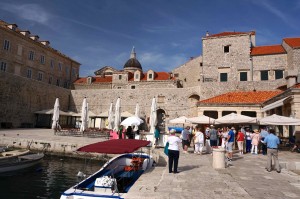
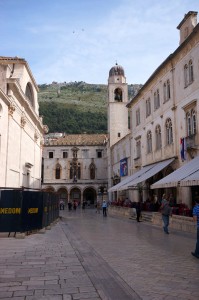
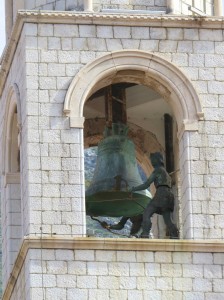
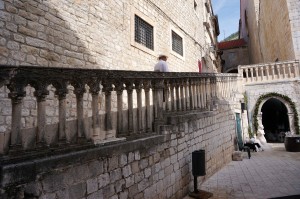
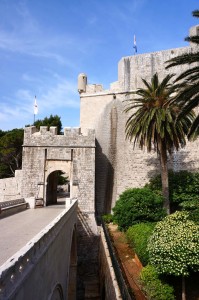
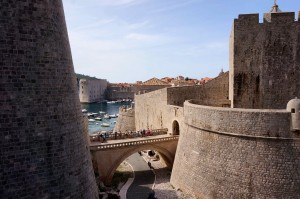 Walls on the land-side are massive and were originally surrounded by a moat.
Walls on the land-side are massive and were originally surrounded by a moat.
Waiting for the cable car with our tour guide
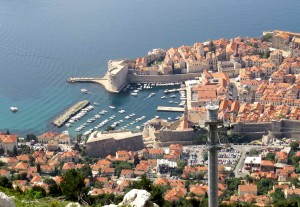
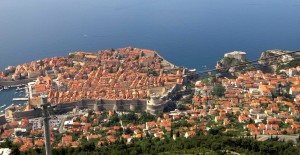
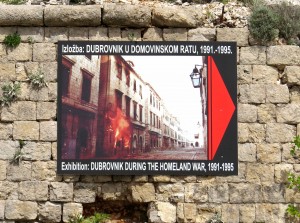
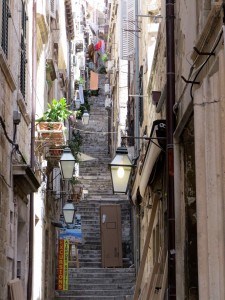
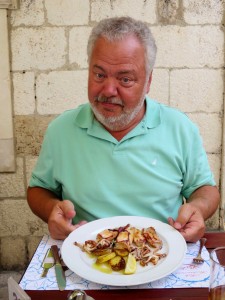
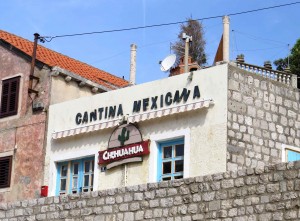
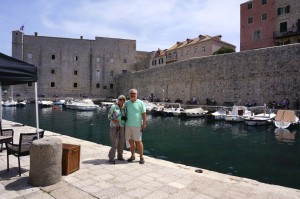
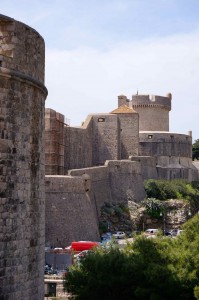
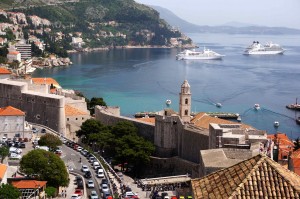
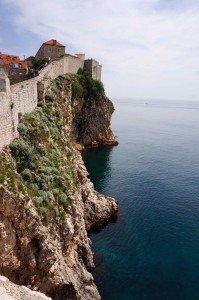
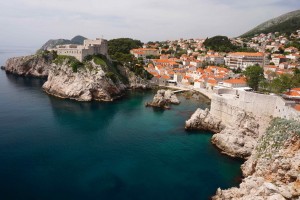
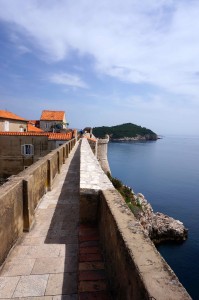
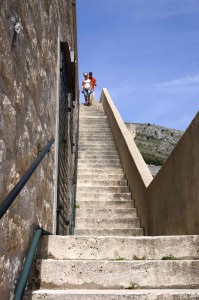
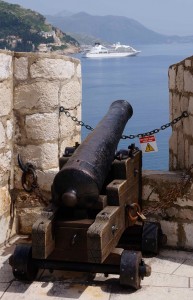
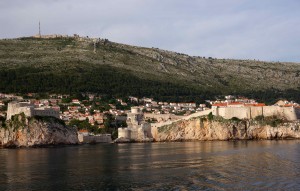
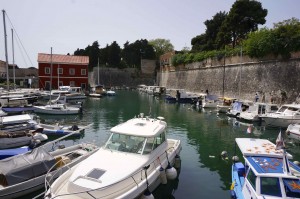
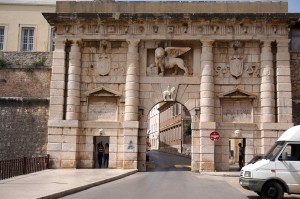
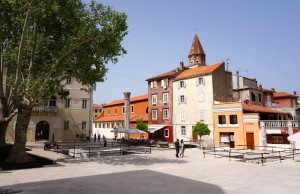
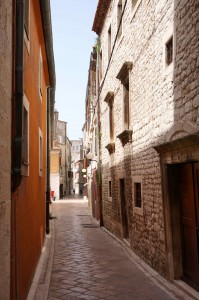
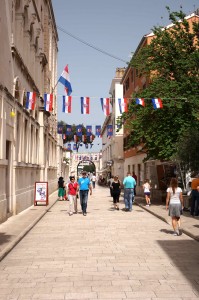
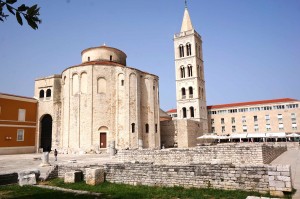
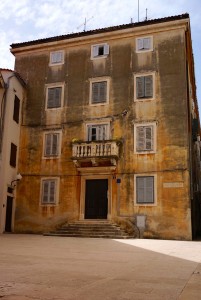
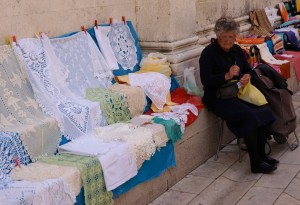
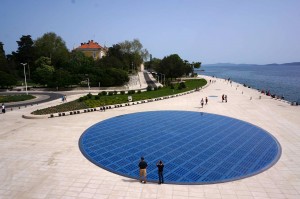
This entry was posted in Croatia, Cruising, Travel
